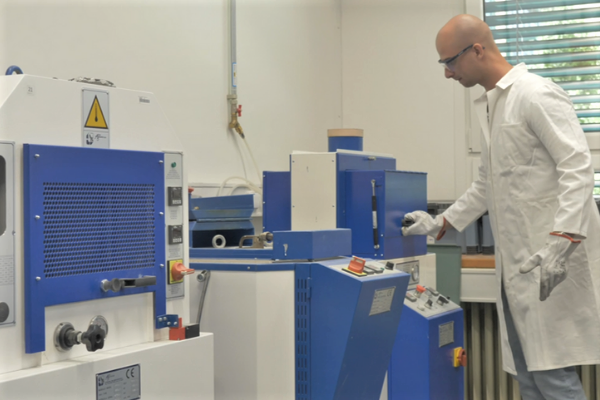Lectures:
1. A survey of main groups of engineering materials; their usability in various industrial branches; principal mechanical properties of engineering materials.
2. Principal kinds of fracture of engineering materials – ductile, brittle fracture. Evaluation of resistance of engineering materials to brittle fracture. Materials containing defects – crack growth; critical crack size; Griffith´s criterion; Griffith-Orowan´s criterion; fracture toughness.
3. Strengthening mechanisms of metallic materials – deformation strengthening; grain boundary strengthening; solid solution strengthening; precipitation strengthening; phase transformation strengthening.
4. Steels and their basic classification. Harmful vs. useful elements in steels. Steels for use at ambient or low temperatures; weldable structural steels; micro-alloyed steels; steels with higher mechanical properties.
5. Principles of steel quenching and tempering; quenched and tempered steels – their characteristics and use.
6. Principles of corrosion of metallic materials – corrosion resistant steels and alloys.
7. Principles of creep of metallic materials – creep resistant steels and alloys.
8. Cast irons – classification, structure; main groups of cast irons – characteristics; use.
9. Important non-ferrous metals and alloys – aluminium; copper, nickel, titanium – structure, properties and use.
10. Engineering ceramics – basic classifications; methods of toughness increasing in engineering ceramics; use of ceramic materials.
11. Polymer materials – basic classification, principle reactions, internal structure of polymers; mechanical properties; char Chacteristics of thermoplasts, thermosets and elastomers – fields of use.
12. Composites – classification, basic characteristics; particle-reinforced composites; fibre-reinforced composites – structure, properties and use.
1. A survey of main groups of engineering materials; their usability in various industrial branches; principal mechanical properties of engineering materials.
2. Principal kinds of fracture of engineering materials – ductile, brittle fracture. Evaluation of resistance of engineering materials to brittle fracture. Materials containing defects – crack growth; critical crack size; Griffith´s criterion; Griffith-Orowan´s criterion; fracture toughness.
3. Strengthening mechanisms of metallic materials – deformation strengthening; grain boundary strengthening; solid solution strengthening; precipitation strengthening; phase transformation strengthening.
4. Steels and their basic classification. Harmful vs. useful elements in steels. Steels for use at ambient or low temperatures; weldable structural steels; micro-alloyed steels; steels with higher mechanical properties.
5. Principles of steel quenching and tempering; quenched and tempered steels – their characteristics and use.
6. Principles of corrosion of metallic materials – corrosion resistant steels and alloys.
7. Principles of creep of metallic materials – creep resistant steels and alloys.
8. Cast irons – classification, structure; main groups of cast irons – characteristics; use.
9. Important non-ferrous metals and alloys – aluminium; copper, nickel, titanium – structure, properties and use.
10. Engineering ceramics – basic classifications; methods of toughness increasing in engineering ceramics; use of ceramic materials.
11. Polymer materials – basic classification, principle reactions, internal structure of polymers; mechanical properties; char Chacteristics of thermoplasts, thermosets and elastomers – fields of use.
12. Composites – classification, basic characteristics; particle-reinforced composites; fibre-reinforced composites – structure, properties and use.
